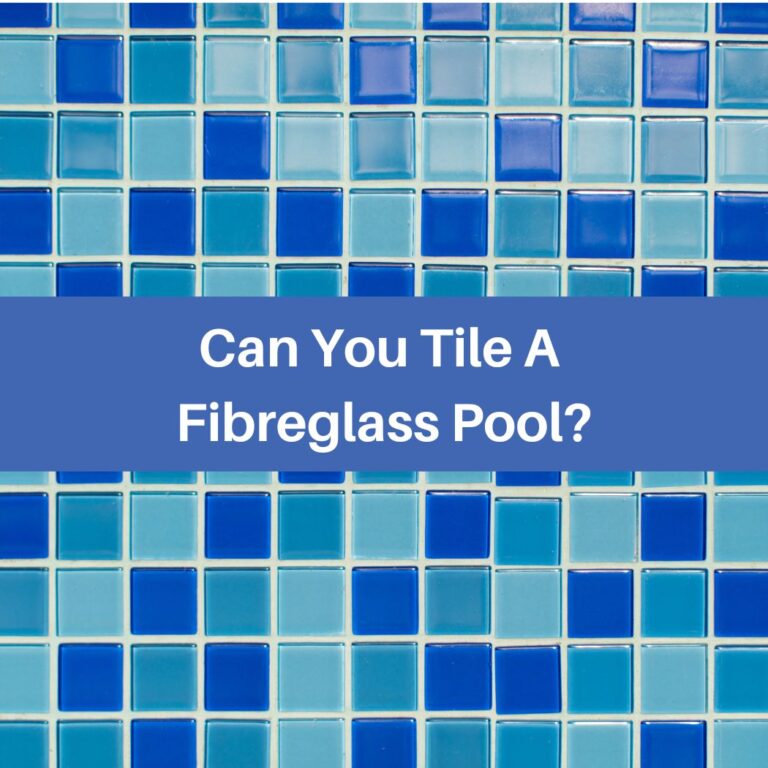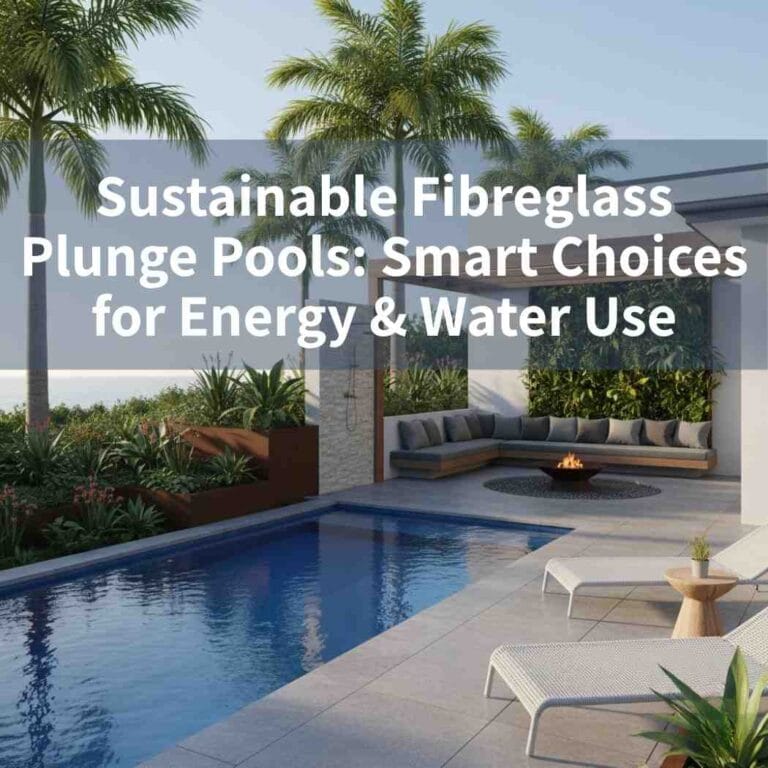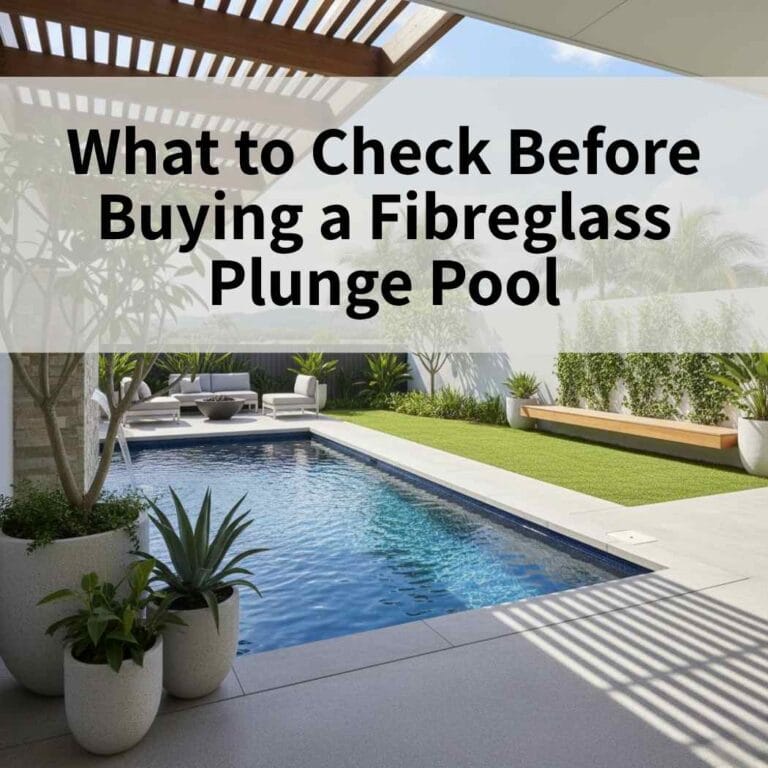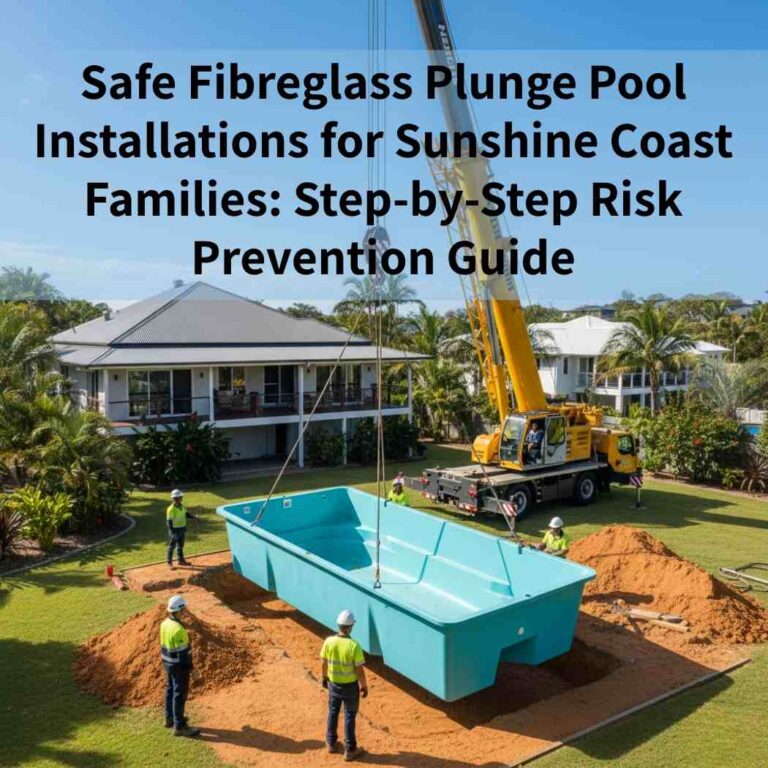At Plunge Pools Sunshine Coast, we help homeowners build both types based on soil, slope, and climate. We make sure every pool is safe, compliant, and built for local conditions under QBCC and Sunshine Coast Council standards.
For a fuller view of sizing, features, and long-term upkeep, see our complete guide to fibreglass plunge pools before you decide.
This guide explains the 7 key trade-offs to help you choose the right pool for your home, block, and budget.
Table of Contents
Toggle1. Upfront Budget vs Lifetime Cost – Fibreglass vs Concrete Plunge Pools
Fibreglass vs concrete plunge pools differ greatly in how long they take to install.
| Pool Type | Typical Price Range | Why |
|---|---|---|
| Fibreglass | $25,000 – $40,000 installed | Pre-made shell, less labour and site work |
| Concrete | $40,000 – $65,000 + | Custom build, flexible design and finish |
Takeaway:
Go fibreglass for a fast, affordable start with low maintenance.
Go concrete if you want a lifetime investment and a high-end look.
2. Installation Speed vs On-Site Flexibility
Fibreglass installs in weeks; concrete takes longer but suits complex sites.
| Pool Type | Average Install Time | Key Factors |
|---|---|---|
| Fibreglass | 1–2 weeks | Pre-moulded shell, fewer weather delays |
| Concrete | 6–10 weeks | Built on-site; depends on curing time and access |
Takeaway:
Choose fibreglass if you want to be swim-ready by summer.
Choose concrete if your site has tricky access or needs a custom design.
3. Design Customisation vs Prefabricated Shapes
Concrete gives full creative freedom; fibreglass offers simple modern shapes.
- Fibreglass: Comes in ready-made sizes and colours such as square, oval, or rectangular.
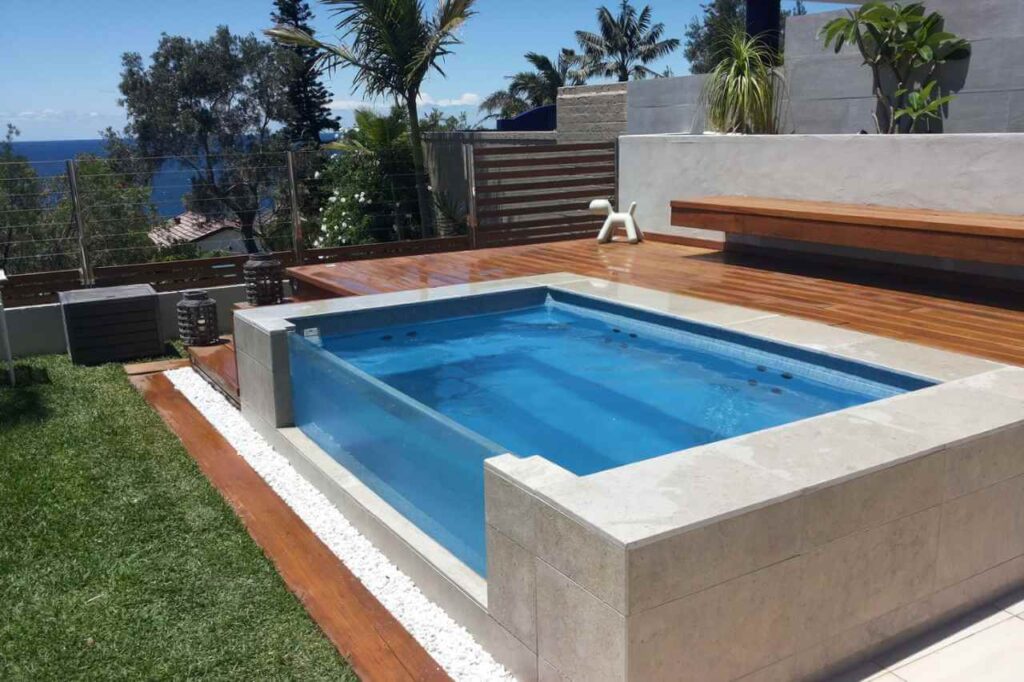
- Concrete: Fully customisable — add benches, play zones, infinity edges, or spa jets (+$5,000 – $15,000).
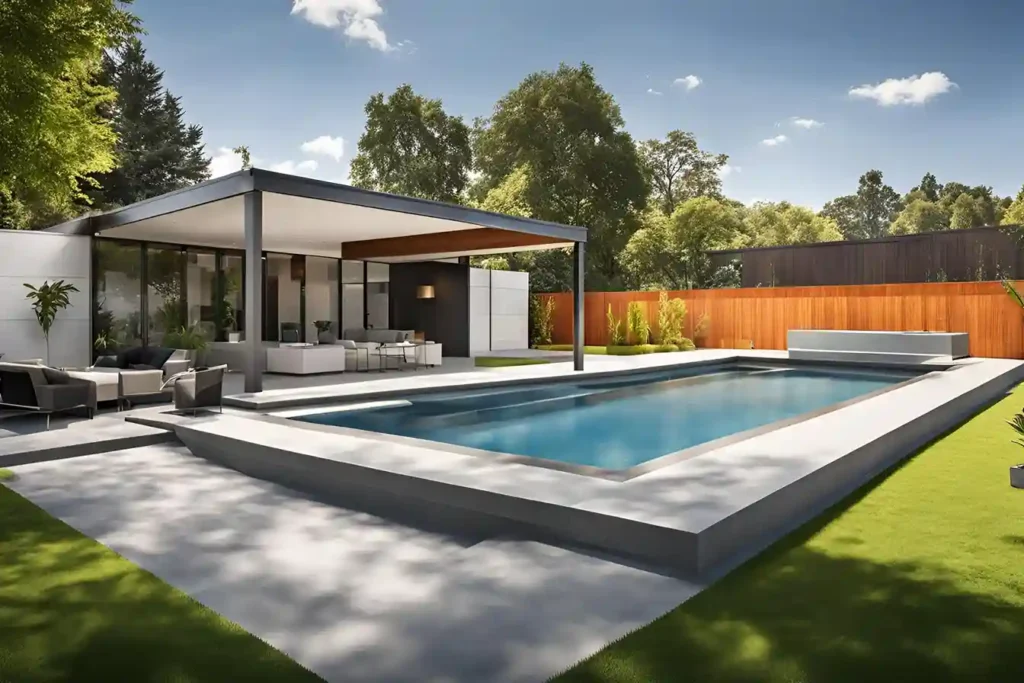
Takeaway:
Go fibreglass for sleek simplicity.
Go concrete for one-of-a-kind designs that match your home.
4. Durability and Maintenance Demands
Concrete lasts longer; fibreglass is easier to maintain.
- Fibreglass: Smooth gelcoat surface resists algae and needs little upkeep. May need resurfacing after 15–20 years.
- Concrete: Can last 30 + years but needs resealing every 10–15 years to stay waterproof.
Takeaway:
Pick fibreglass for easy cleaning and minimal care.
Pick concrete for long-term strength and property value.
5. Aesthetics and Finish Options
Concrete wins for design freedom; fibreglass delivers clean coastal style.
- Fibreglass: Glossy finishes in factory colours — perfect for modern Sunshine Coast homes.
- Concrete: Endless finishes like pebblecrete, tile, or stone. Works beautifully with decking or retaining walls.
Takeaway:
Fibreglass suits minimalist backyards.
Concrete turns your pool into a statement feature.
6. Site Constraints and Soil Conditions
Fibreglass suits level blocks; concrete suits slopes and sandy-clay soils.
| Site Type | Best Option | Why |
|---|---|---|
| Flat, easy-access lot | Fibreglass | Lightweight shell and simple install |
| Sloped or narrow block | Concrete | Engineered for complex ground or retaining walls |
| Coastal sandy base | Either | Both handle sandy soil with good drainage |
Takeaway:
Choose fibreglass for stable, level sites.
Choose concrete for hillside or uneven yards.
7. Resale Perception and Property Value
Concrete pools boost prestige; fibreglass adds practical value.
- Fibreglass: Great for families wanting low-maintenance luxury without overspending.
- Concrete: Seen as high-end and can lift property value when paired with quality landscaping.
Takeaway:
Selling soon? Go fibreglass for better return on cost.
Building your forever home? Concrete adds lasting appeal.
Decision Matrix: Which Pool Type Fits Your Home?
| Lifestyle Goal | Best Choice | Why It Fits |
|---|---|---|
| Fast, affordable, low-maintenance | Fibreglass | Quick install, simple upkeep |
| Custom design and luxury finishes | Concrete | Fully tailored and premium |
| Level suburban block | Fibreglass | Easy access and soil stability |
| Sloping or narrow block | Concrete | Built for complex terrain |
| Short-term home ownership | Fibreglass | Budget-friendly, easy resale |
| Long-term or prestige build | Concrete | High value and design freedom |
Pre-Installation Checklist
Before choosing your pool type, confirm these essentials:
-
Site soil and slope assessment done
-
Timeline and budget confirmed
-
Builder licensed by QBCC
-
Council approval ready under Sunshine Coast Council rules
-
Warranty and after-care coverage reviewed
-
Quote includes excavation, drainage, fencing, and compliance costs
Lock in dates and compliance with Queensland standards—start with fibreglass plunge pools specified, supplied, and installed by our local team.
Conclusion
Both fibreglass and concrete plunge pools offer great value — it’s all about what fits your home and lifestyle.
Fibreglass shines for speed and simplicity, while concrete wins for custom design and long-term return.
If you’re unsure which to choose, we can help.
Book a free site evaluation with Plunge Pools Sunshine Coast, your local experts in both fibreglass and concrete plunge pools. Ready to move from research to action? Request a fully licensed fibreglass plunge pool installation and get a fixed-scope quote for your Sunshine Coast home.
FAQs
Do I need council approval before installing a plunge pool on the Sunshine Coast?
Yes. Most plunge pools need council or building approval. Rules depend on size, depth, and setback from boundaries. Your QBCC-licensed pool builder can submit plans and barrier details to the Sunshine Coast Council.
Can fibreglass plunge pools be partially above-ground on sloping blocks?
Yes, if the base is properly supported and engineered. Builders may use retaining walls or decking for stability and style. For steep sites, concrete is usually the safer choice.
Are there size limits for fibreglass plunge pools due to transport or access?
Yes. Fibreglass pools come as one pre-moulded shell, usually up to 3.5 metres wide for delivery and crane placement. Narrow blocks may need smaller models or special lifting equipment.
How does pool heating differ between fibreglass and concrete?
Fibreglass keeps heat better because its shell insulates water. Concrete may cool faster, but it works well with solar or heat-pump systems. A pool cover helps both types stay warm and efficient.
What warranty or guarantee comes with each pool type?
Fibreglass pools include 25–30 year structural warranties from the manufacturer. Concrete pools are covered by QBCC workmanship warranties (about 7–10 years). Always check both before signing.
Can a concrete plunge pool be resurfaced or updated later?
Yes. Concrete pools can be retiled, resurfaced, or reshaped years later. Many owners upgrade with new tiles, pebblecrete, or render every 10–15 years to keep the pool looking new.

